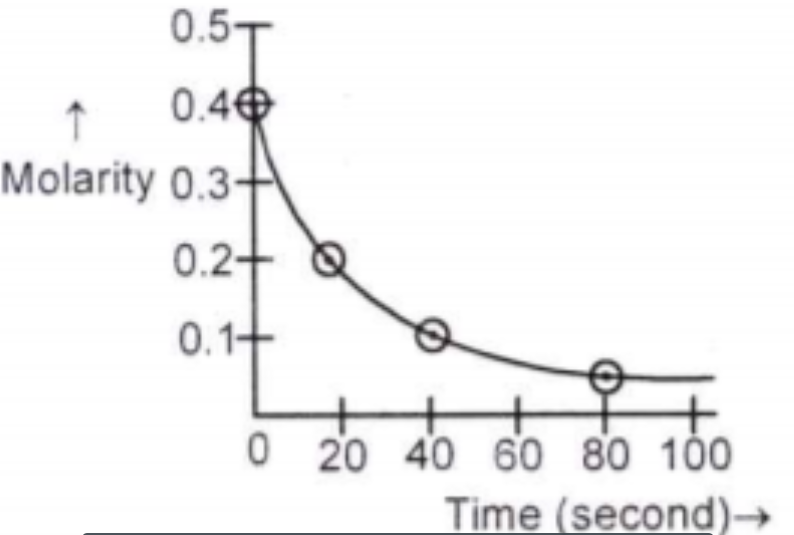An ezyme [E] is combined with the substrate [S] as follows : E+Sk1⇐⇒k4ESk2−−→P+E
The overall reaction rate is given by , rate =Vmax[S]Km+[S]. The reaction rate varies with substrate concentration as :
![An ezyme [E] is combined with the substrate [S] as follows : E + S overset(k1)underset(k4)hArr ES overset(k2) rarr P + E The overall reaction rate is given by , rate = (V](https://d10lpgp6xz60nq.cloudfront.net/physics_images/BRL_JEE_MN_ADV_CHE_XII_V01_C05_E03_053_Q01.png)
The order of reaction at point A is : Solution in Malayalam
one
two
three
zero
The correct Answer is:A
one
Similar Questions
अभिक्रिया की क्रियाविधि
Ar−−→BII−−→CII−−→DIVE
तथा आँकड़े दिये गये हैं

दर निर्धारण पद हैView SolutionIn order of reaction A overset(K_1)to B overset(K_2)to C overset(K_3)toD, K_3 gt K_2 gt K_1 So the rate determinant of the reaction is: -
03:07View SolutionEnzymes are biocatalysts which regulate various biochemical reactions. Illustrate the following reactions. E +S ES rarr E + P
01:59View SolutionIn the sequence of reaction A overset(k_1) rarr B overset(k_2)rarr C overset(k_3) rarr D K_3>K_2>K_1 , then the rate determining step of the reaction is
01:46View SolutionIn a reversible chemical reaction, 2NO_2 overset(k_1) underset(k_2) iff N_2O_4 the rate of disappearance of NO_2 is equal to
03:14View SolutionA reaction follows the given concentration-time graph The rate for this reaction at 20 s will be
 02:07View Solution
02:07View SolutionFor the reaction , N_2O_4(g)underset(K_2)overset(K_1)hArr2NO_2(g) , the rate of disappearance of NO_2 will be
02:57View SolutionFor the reaction : 2A + B rarr C + D , measurement of the rate of the reaction at varying concentrations are given below: {:("Trial No.",[A],[B],"Rate in mol L"^(-1)s^(-1)),(1,0.010,0.010,2.5),(2,0.010,0.020,5.0),(3,0.030,0.020,45.0):} The overall order of the reaction is :
04:35View Solution

